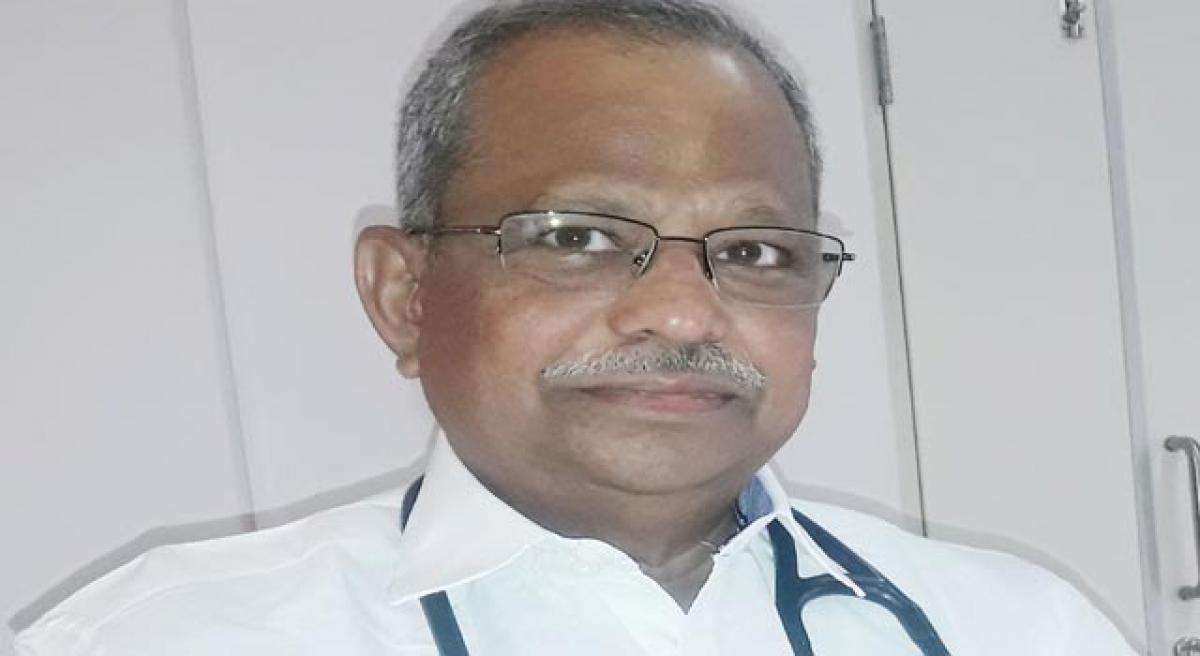Live
- China maintains yellow alerts for blizzards, cold waves
- Japan's Yamanashi plans to raise entry fee for Mount Fuji climbers
- Convert those starts: Hemp wants Bangladesh batters to score big in second Test vs West Indies
- OpenAI signs 1st MoU in South Korea to foster AI ecosystem
- Fire breaks out during rocket test at Japan's space centre
- Nigerian military kills more suspected terrorists in Lake Chad Basin airstrikes
- NABL signs pact for on-site testing of materials in construction projects
- Cantonment MLA Sri Ganesh Advocates for New RTO Office Amid Road Expansion Concerns
- UN humanitarian chief meets Sudan's Al-Burhan to address aid crisis
- Zimbabwean president calls for international support to resolve debt issues
Just In

The common cause of blockage of blood vessels is Deposition of fat and Cholesterol inside the Arteries (Coronaries/Heart vessels, Carotids / Brain vessels). If deposition and blockage is rapid and fast and complete it causes Heart attacks and Strokes.
The common cause of blockage of blood vessels is Deposition of fat and Cholesterol inside the Arteries (Coronaries/Heart vessels, Carotids / Brain vessels). If deposition and blockage is rapid and fast and complete it causes Heart attacks and Strokes. If the blockage is slow and incomplete for Heart vessels it causes difficulty in breathing or Chest pain on Exertion or Emotion, and for Brain vessels it causes giddiness, faintness or temporary weakness.
Earlier The Blocks are thought to be permanent and the size and activity of Block is fixed and permanent. In 1986, Scientist Dr Blackenhorn has showed with coronary angiography that blocks can decrease and circulation improves. Later several studies showed that the blocks are not fixed but Alter and change with lifestyle changes, Medication and reduction of mental stress.
Blocks less than 60-70 per cent diameter are more likely to change called reverse re-modelling The blocks mainly contain LDL Cholesterol, Inflammatory cells, Phagocytes fibrous tissue and sometimes Viruses. Depending on predominant component the blocks can be active or inactive Blocks which contain less Lipid, Less or no inflammatory cells and more fibrous tissue are more stable and inactive and cause less symptoms On the other hand blocks which contain more Cholesterol, more inflammatory cells and less fibrous cap are more active, unstable and cause frequent symptoms. Inflammation makes inactive plaque in to active plaque.
Calcium deposition causes more severe narrowing of arteries. Calcium which is projecting in to Lumen or calcific plaques projecting in to Lumen activates clot formation by attracting tiny blood cells called Platelets .The longer the length of the block greater the changes of symptoms. If the block is sudden and complete as happens in dislodgement of plaque or flap it results in sudden emergency event and damage to the Heart or Brain cells and tissues.
It is an Emergency situation, so the clot or block has to be opened with balloon or by Medication like Streptokinase or Alteplase. On the other hand if blocking is slow in growth, even though complete, side channels develop from the side blood vessels and symptoms develop only on exertion or stress and there is no damage to tissues.
Healthy life style changes like food habits, weight control, regular exercise, decreasing bad cholesterol, control of hypertension, avoiding smoking, stress control, Breathing exercises, Control of Diabetes mellitus improve endothelial function and reduce blockage of blood vessels. Medications like Atorvastatin, Rosuvastatin and Angiotensin blockers like Ramipril, Telmisartan, Olmesartan and Azilsartan improve vascular health.
By maintaining healthy lifestyles and medications vascular age improves. Otherwise the vascular age progresses beyond chronological or biological age and cause vascular ill health. Written by Sr Consultant Cardiologist, Apollo Hospital Jubilee Hills, Hyderabad.
By Dr Nekkanti Venkat Rayudu

© 2024 Hyderabad Media House Limited/The Hans India. All rights reserved. Powered by hocalwire.com







